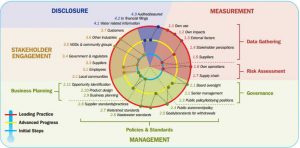Primary Functions
- Develop a better understanding of the broad range of risks associated with investments and financing of water-exposed and -related projects.
- Find guidance on emerging opportunities in the water sector.
- Find procedures to identify, assess, and mitigate the material and reputational risks associated with water.
Detailed Description
In the water sector, there exist uncertainties and strong differences of opinion about the best forms of public-private interaction and financing approaches that will enable us to deliver on “clean water for all”. The political and operational risks that these considerations bring to water projects worldwide are a further complication for financial services looking to back water-related business opportunities.
UNEP Finance Initiative’s Water Work Stream, in publishing these Water-Related Risk Management Guidelines, seeks to foster a better understanding of the broad range of risks associated with investments and financing of water-exposed and -related projects. As well as capturing the key risks and highlighting mitigation strategies within project finance, corporate finance and asset management, the guidelines flag up emerging opportunities in the water sector.
These Guidelines (Guidelines) address the broad range of water related risks (WRR) that are faced by financial institutions (FIs) and the flip-side of those risks – the significant and growing water related opportunities (WRO).
WRR and WRO are rising in importance as drivers of financial behaviour as a result of climate change, the related rise in drought and flood events, an accelerated growth in global water-consumption and discharge, increasing government attention to the water environment, as well as the mobilisation of civil society around water-related issues.
In this global landscape, the financial sector is becoming increasingly aware of the risks and opportunities posed by water as competing demands for resources grow and supplies become more erratic. In order to lend, invest, or insure wisely, FIs need to understand better these risks and opportunities and to deal with them systematically within their existing risk appraisal and management processes.





